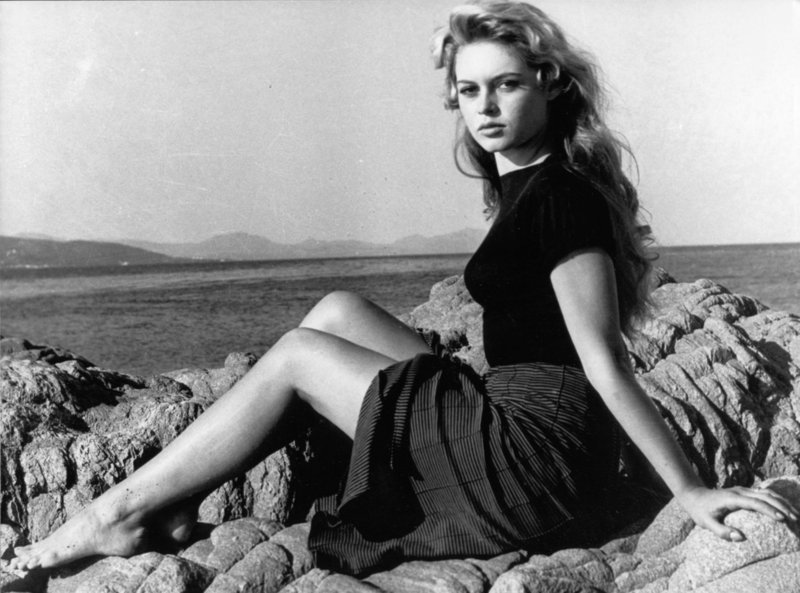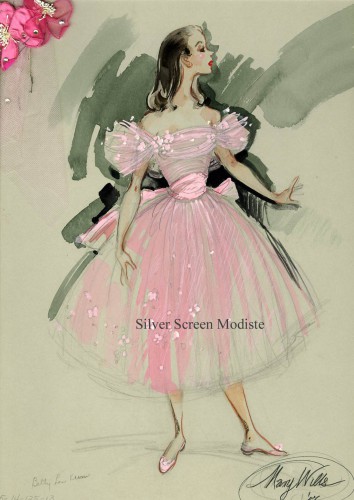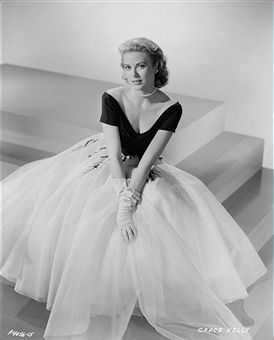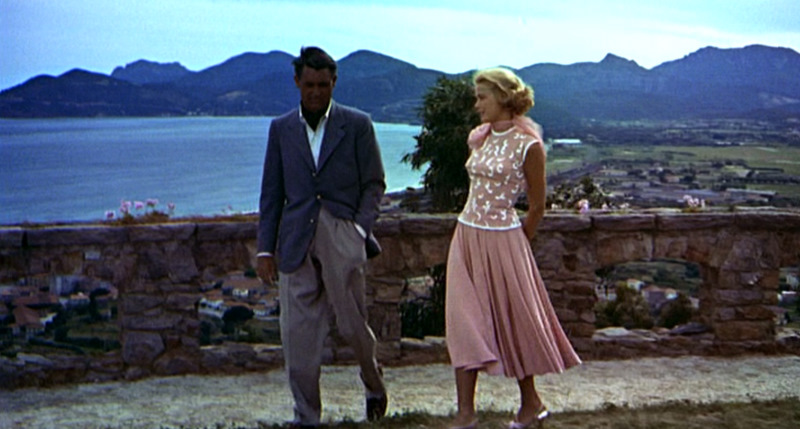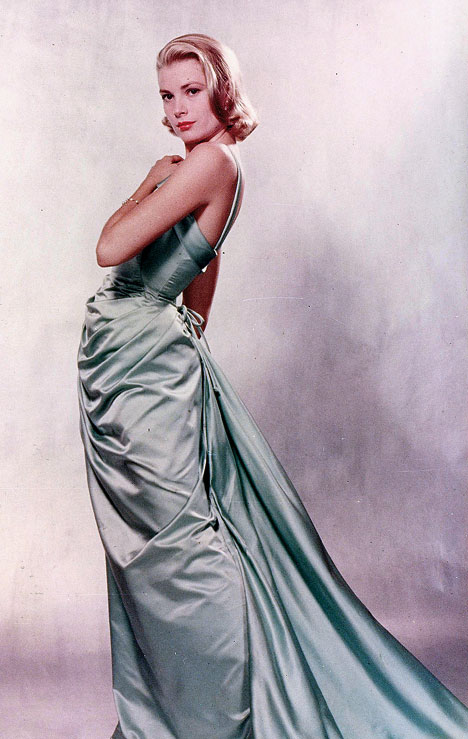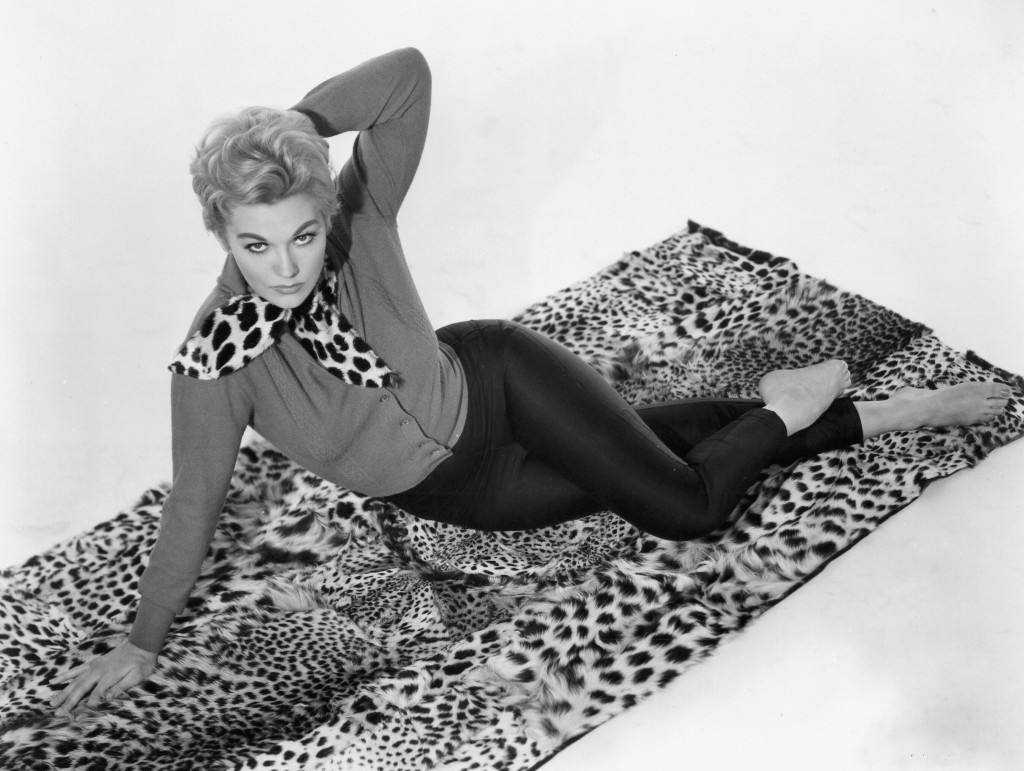The 1950s are presented in various and changing images as the years go by, bolstered by films and TV shows: suburban growth; stereotypical families; mass consumerism; the cold war and the threat of the atomic bomb; rebelious rockers; and a seemingly simpler even idyllic time. In Hollywood the Production Code was still in force, and therefore the censor still prevailed in what was shown on the screen and how far a screenplay could go in subject matter and treatment.
In the post-war 1950s, the combined restrictions from film censorship and the lagging societal constraint on sex in general had the effect of unleashing an ever-present focus on the image of female sexual attraction on film. While beautiful movie stars with sex appeal had been around since the silent screen, the overt sexual magnetism of the 1950s stars is contrasted and often made contradictory by the wholesome image of the star. This role was played by several stars including the beautiful Esther Williams, and was perfected by Doris Day.

The European movie-stars on the other hand provided the desired amount of foreign, and a perceived lack of restraint to play daring roles in film, while wearing provocative costumes and fashions. American G.I.s during World War II already had a taste of their appeal. Sofia Loren, beginning her film career in Italy in 1950, virtually defined the post-war look of continental sexual allure. Such a look is not based on showing a lot of skin, nor is it entirely based on the French New Look in fashion. But in the dress above worn by Sofia Loren, the style shows off the contours of her body perfectly, and it does share with the New Look a reliance on corsetry to pinch the waist in order to accent the hips and bust, the latter the particular sexual fetish of the 1950s.
Another European bombshell exploded on the scene in the 1950s: Brigitte Bardot. She began making movies in 1952, but her beauty and looks typecast her in lightweight eye-candy roles. Her then-husband Roger Vadim, part of the French New Wave, cast her along with Jean-Louis Tintignant in And God Created Woman (Et Dieu Crea la Femme) in 1956, and an iconic star was born. Bardot was very much a portent for the look of the coming 1960s (and later decades). She is pictured below in a costume from And God Created Woman. The outfit was designed by French couturier Pierre Balmain. It is a simple black shirt with a long center-buttoned skirt. Later in the film she dances in the outfit with the buttons undone to her waist. Brigitte Bardot had previously popularized the bikini bathing suit on the French Riviera.
America’s swimsuit goddess was Esther Wiliams, a previous National champion swimmer who became a movie star at MGM. The studio created the wildly popular genre of “acqua-musicals” based on her skills and personality. Following years of the Great Depression and WWII, the smiling face and healthy physique of Esther Williams combined with the sunny skies of California made for a popular series of films. The costume and fashion designer Irene dressed Esther Williams in her early MGM movies, although Helen Rose designed for her 1950s films, including the classic Million Dollar Mermaid, 1952; Easy to Love, 1953; and Dangerous When Wet, 1953. Both designers designed Esther’s unique swimsuits for the films.
The fashion trend that defined the basic look of the 1950s started in Paris with the couture creations of Christian Dior. Following years of deprivation during World War II, French couture went on a splurge in the use of fabric, which had previously been rationed. The
“New Look” as it was dubbed by Life Magazine in late 1947, was based on a pinched waist, a full skirt with layers of petitcoats, and a full breasted-bodice, the whole based on foundation undergarments. The style was a return to the hourglass silhouette popular during the 1860s and earlier.
The model below shows a Christian Dior fashion. During the 1949-1950 period, both the New Look and the broad-shouldered, pencil-skirted look of the 1940s could be seen side-by-side. There were some groups of women that demonstrated against the New Look, asking why was Dior trying to hide women’s legs.
As would increasingly be the case, youth, led the way in starting the trend in the U.S. The movies continued to have a major impact through the combination of costume designer and star they dressed. One such combo was Elizabeth Taylor and Helen Rose. Helen Rose had been dressing Elizabeth since she was 15 and starring in A Date with Judy. Her violet eyes, dark hair and prominent eyebrows made for a beautiful impression on screen – and a star was born. Rose designed the Father of the Bride movie in 1950, and subsequently Elizabeth’s real wedding gown, and then the movie sequel. This was followed by Love is Better Than Ever, made in 1951 but released in 1952. In this film Rose dresses Elizabeth Taylor in New Look dresses. Elizabeth had become the model for teenage girls, and both the New Look and Helen Rose became hot.
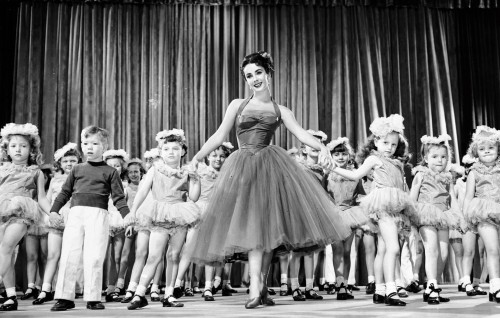
The New Look with its petticoats and prim attention to proper dress seems foreign to the last 30 years of teenage styles, but it was the trend of the day. As ever, teenage girls wanted to look different than their mothers. Shown below is a costume sketch designed by Mary Wills for the movie Teenage Rebel, from 1956. This design was for the teenager played by Betty Lou Keim, the “rebellious” daughter of the character played by Ginger Rogers. A teenage girl yearning for womanhood and showing decollete was the height of fashionable statements of the day.
Elizabeth Taylor matured quickly. The red dress that Helen Rose designed for her in The Last Time I Saw Paris (1954), caused problems with the on-set fiilm censor because of the amount of cleavage that was displayed. This caused a work stoppage and loud arguments by the director Richard Brooks. Brooks ultimately won.
Elizabeth Taylor and Helen Rose teamed up on the Cat on a Hot Tin Roof in 1958. Helen Rose created a dress that would become the fashion rage. The “Cat” dress it would be called, and garment manufacturers were knocking it off all over the world. The chiffon cocktail dress with full skirt and Grecian bodice became so popular that Helen Rose decided to start her own fashion line, and continued selling it in various colors for years. When dressing Elizabeth Taylor, her shoulders and chest were always emphasized to good effect.
Another screen goddess from the 1950s was Grace Kelly. Her smashing entrance into Jimmy Stewart’s apartment in Rear Window (1956) dressed in Edith Head’s stunning black and white evening outfit is unforgettable. The costume is a simple black decollete top and a full white chiffon skirt decorated with beaded twig decorations in black. It was one of Edith Head’s best designs. Grace wears black strappy heels with the outfit.
Edith Head also designed Grace Kelly’s costumes for To Catch a Thief (1955). Grace Kelly was the perfect embodiment of the 1950s sexual image: the wholesome and proper young woman with a lurking sexual appetite, waiting for the right occasion. “Do you want a leg or a breast” she asks Cary Grant as they go out on a picnic. Her rose-colored skirt and white-embroidered sleeveless top shown below is a beautifully-designed outfit for the occasion.
Grace Kelly had worked as a model in her acting student years, and her poise shows in the photo below, wearing an Edith Head gown for the 1955 Academy Awards, where she won Best Actress for Country Girl.
Doris Day seemed to represent the ethos of the 1950s in America. She had started as a singer with big bands and became a hit with the movie Romance on the High Seas, in 1948. U.S. G.I.s in Korea voted her their favorite movie star in 1950. Her movies in the 1950s often had songs that became hit singles, and her teamwork with co-stars Rock Hudson and Tony Randall started in 1959 with Pillow Talk and continued into the 1960s. Doris Day was always a great dresser in her roles, and she worked with the best: Jean Louis; Edith Head; Helen Rose, and she was especially close to Irene, with whom she worked on Midnight Lace, and Lover Come Back, two of the last three movies Irene designed before her death.
In the photo below Doris Day wears a popular leisure outfit of the 1950s, capri pants, called pedal pushers in the day, along with a long-sleeved, collared blouse.

Some actresses were more daring in their looks on screen, and film directors and producers pushed to accent their beauty and sexual appeal. Martha Hyer is shown below in 1957, showing the silhouette that emphasized the then-popular missile-cone bustline.
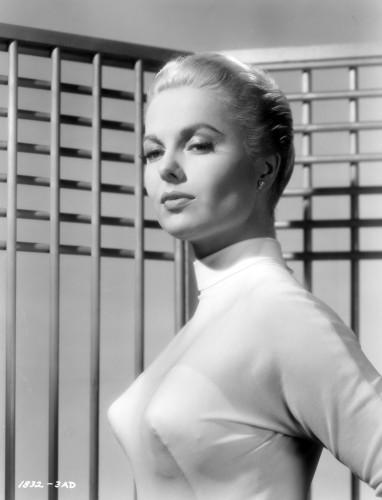
The movie star looks of Elizabeth Taylor, Ava Gardner, and Kim Novak in the1950s created a huge demand for a moulded silhouette emphasizing curves and a prominent bust line. What was achieved through foundation undergarments on film was now becoming increasingly available to the average woman consumer. Nylon was making bras lighter and cheaper, and conical stitching was providing that perfect “missile bra” look so desired in the mid 1950s.
The “Sweater Girl” look had also became popular, starting with the films of Lana Turner. In the 1950s there was a competition for the title of “National Sweater Queen.” In the early 50s the tight sweater was worn with the very full circle skirts made popular by the New Look. Later in the decade and into the early 1960s, tight pants were joined with tight sweaters to make the very hot look as shown below by Kim Novak.
And of course what would the 1950s be without Marilyn Monroe, star then and everlasting star. She had so many looks, but costume and fashion designer William “Billy” Travilla dressed her best in her films for 20th Century-Fox. Below she wears a gold lame gown from Gentlemen Prefer Blondes (1953). Travilla knew how to accentuate Marilyn’s curves while providing her glamorous and beautiful costumes. He was also daring with such outfits as the one below.

As the 1950s rolled into the early 1960s, fashions made no particularly big swings. The “revolutionary” styles were around the corner in 1963 and beyond. The sexual revolution of the 1960s was concentrated on the young. By then the sexual tidal wave in film fashion had already been crashing on the censor’s gates for years.
Views: 2404

